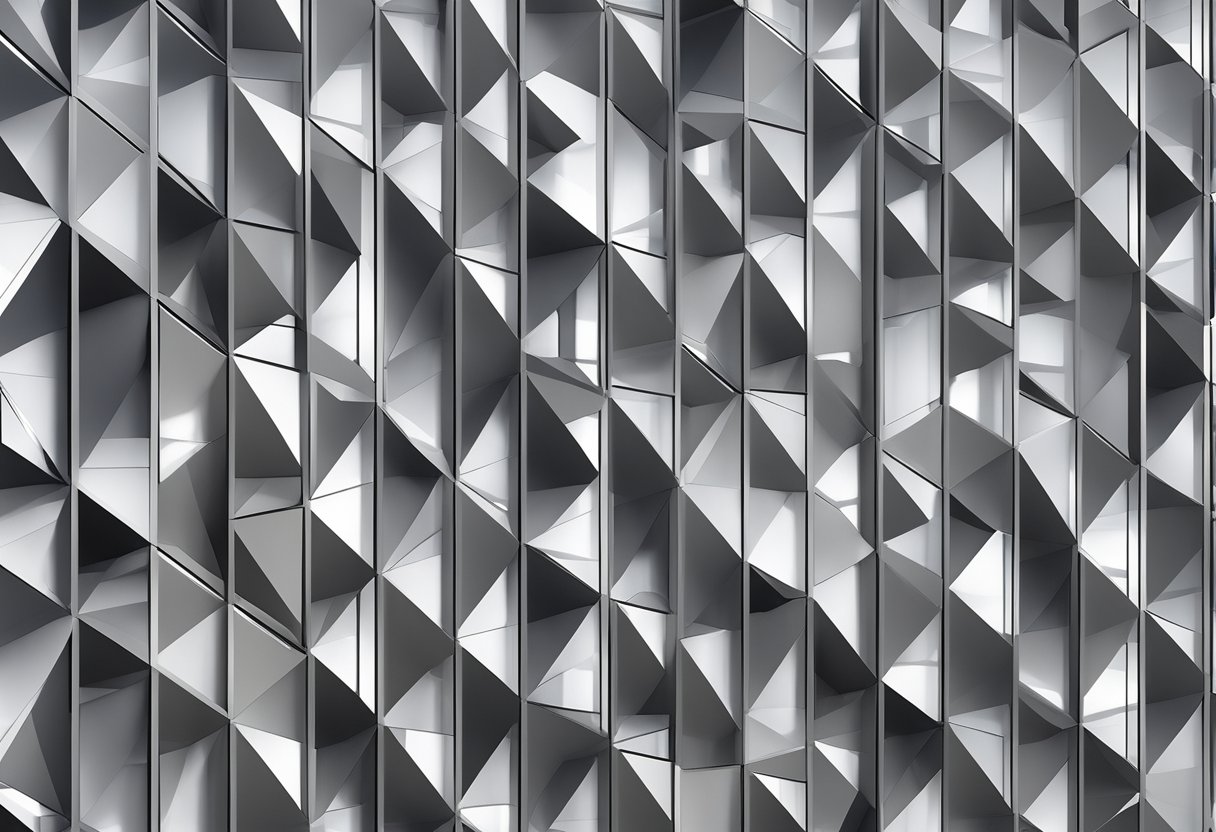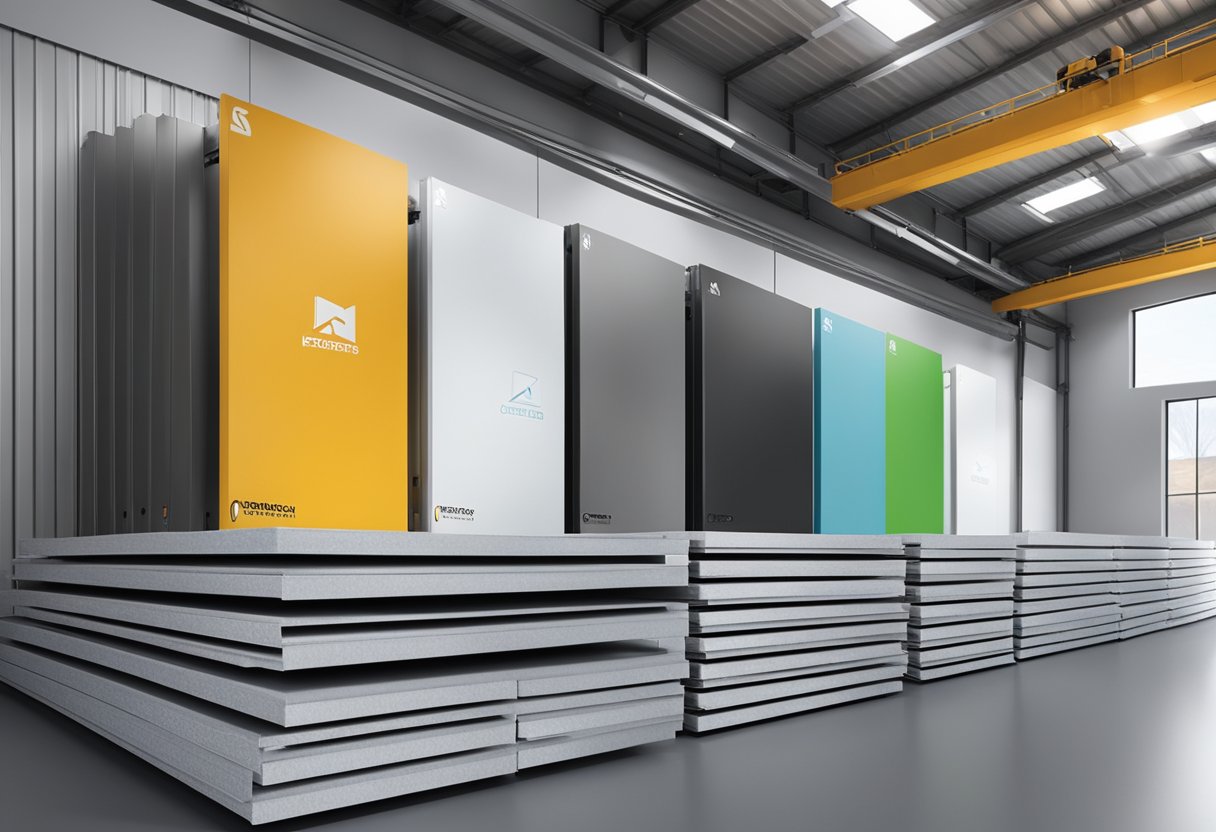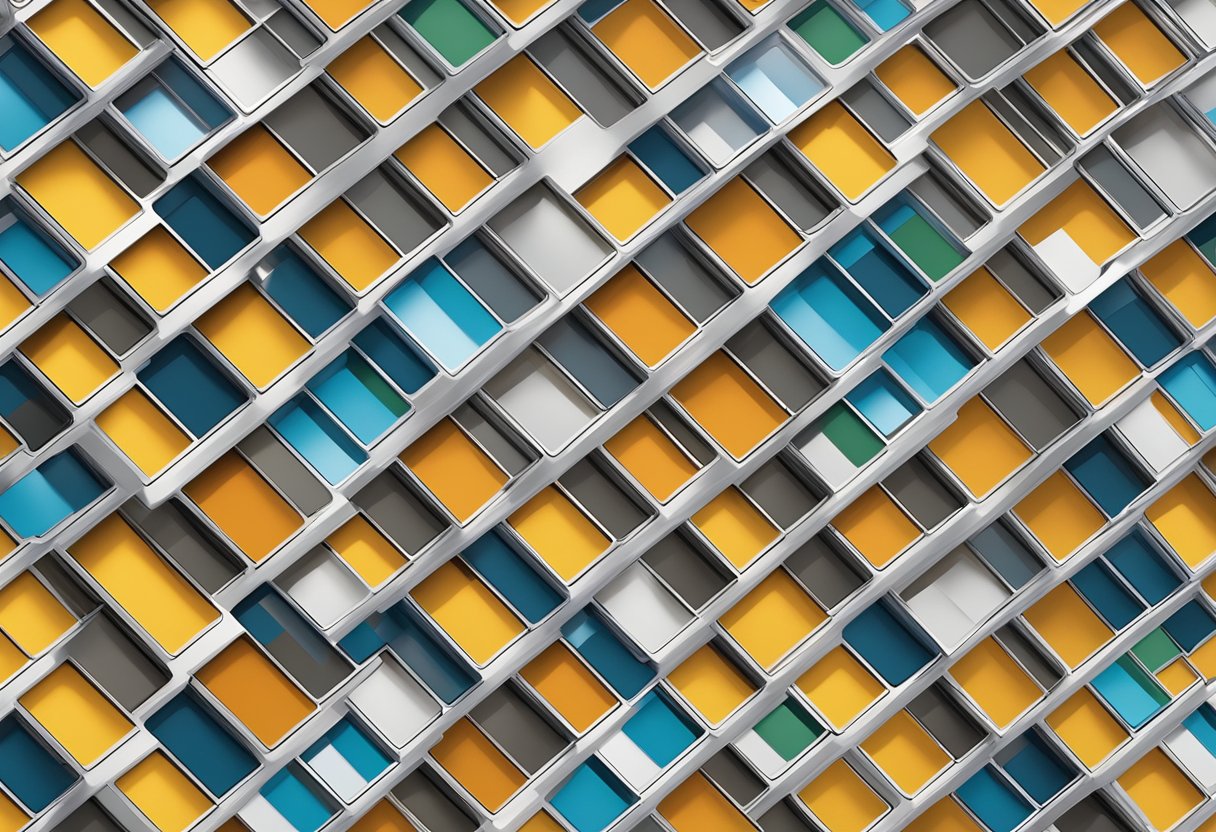Alucobond aluminum composite panel is a popular building material known for its versatility and durability. It is made up of two aluminum sheets that are bonded to a solid polyethylene core, creating a lightweight yet strong panel. The panels come in a variety of colors and finishes, making it a popular choice for architects and designers who want to achieve a modern, sleek look for their buildings.

One of the advantages of using Alucobond panels is that they are weather-resistant and can withstand harsh environmental conditions. They are also fire-resistant, making them a safe choice for buildings that require high fire safety standards. Additionally, the panels are easy to install and can be cut to size on-site, reducing installation time and costs.
Overall, the Alucobond aluminum composite panel is a reliable and versatile building material that offers numerous benefits for architects, designers, and building owners. Its durability, weather resistance, and fire-safety features make it a popular choice for a wide range of applications, from commercial buildings to residential homes.
History of Alucobond

Alucobond is an aluminum composite panel that has been in use for over 50 years. It was first introduced in 1969 by the German company, Alusuisse. Since then, it has become a popular choice for architects and designers worldwide due to its versatility, durability, and aesthetic appeal.
Alucobond is made up of two aluminum sheets that are bonded to a core of polyethylene. The aluminum sheets are coated with a high-quality paint finish that is resistant to weathering and fading. The core provides excellent insulation and soundproofing, making it an ideal material for use in buildings.
Over the years, Alucobond has undergone several improvements to enhance its performance. The company has introduced new colors, finishes, and textures to cater to the changing needs of the market. Today, Alucobond is available in a wide range of colors and finishes, including metallic, matte, and gloss.
Alucobond has been used in many notable buildings around the world, including the Burj Khalifa in Dubai, the Shard in London, and the Petronas Towers in Kuala Lumpur. Its popularity continues to grow, and it is now used in a variety of applications, including facades, cladding, roofing, and signage.
Overall, Alucobond has a rich history and has proven to be a reliable and versatile material for architectural and design applications.
Composition and Material Properties

Core Materials
Alucobond aluminum composite panel consists of two aluminum sheets bonded to a core material. The core material can be made of either polyethylene or fire-resistant mineral-filled core. The polyethylene core is made of low-density polyethylene, while the mineral-filled core is made of non-combustible mineral-filled core material. The core material provides rigidity and stability to the panel.
Aluminum Layers
The aluminum layers of Alucobond aluminum composite panel are made of high-quality aluminum alloy. The thickness of the aluminum sheets can vary from 0.02 inches to 0.3 inches. The aluminum layers are coated with a primer to ensure better adhesion to the core material.
Coating Types
The coating on the aluminum layers of Alucobond aluminum composite panel can be of two types: PVDF and Polyester. PVDF coating is a high-performance coating that provides excellent resistance to weathering, UV radiation, and chemicals. Polyester coating is a cost-effective coating that provides good resistance to weathering and UV radiation.
Alucobond aluminum composite panel is a lightweight, durable, and versatile material that is widely used in the construction industry for cladding, facades, and signage. Its excellent properties make it an ideal material for both interior and exterior applications.
Manufacturing Process
Alucobond aluminum composite panels are manufactured using a continuous lamination process that involves bonding two thin sheets of aluminum to a solid polyethylene core. The process begins with the preparation of the aluminum sheets, which are cleaned and treated with a chromate conversion coating to enhance their adhesion properties.
Next, a layer of adhesive is applied to the polyethylene core, which is then sandwiched between the two aluminum sheets. The three layers are then passed through a series of rollers to ensure a uniform thickness and to bond the layers together.
During the lamination process, the panels can be customized to meet specific design requirements. This can include adding a variety of finishes, such as brushed or mirrored aluminum, as well as incorporating different colors and textures.
Once the panels have been laminated, they are cut to size and shaped using specialized equipment. This can include routing, folding, and bending the panels to create custom shapes and designs.
Overall, the manufacturing process for Alucobond aluminum composite panels is a precise and highly controlled process that ensures consistent quality and performance. The resulting panels are lightweight, durable, and versatile, making them an ideal choice for a wide range of applications in the construction industry.
Mechanical and Physical Properties
Durability
Alucobond aluminum composite panel is known for its exceptional durability. The panel is made up of two aluminum sheets that are bonded to a thermoplastic core. This construction makes the panel resistant to impact, weather, and corrosion. The panel can withstand harsh environmental conditions and is suitable for both indoor and outdoor applications.
Flexibility
Alucobond aluminum composite panel is a versatile material that can be easily bent, shaped, and cut. The panel can be fabricated into different shapes and sizes to meet specific design requirements. The flexibility of the panel also makes it easy to install, reducing installation time and costs.
Weight
Alucobond aluminum composite panel is lightweight, making it easy to handle and transport. The panel’s low weight also reduces the load on the building’s structure, making it suitable for high-rise buildings. Despite its low weight, the panel is strong and durable, making it an ideal material for building facades and cladding.
In summary, Alucobond aluminum composite panel is a durable, flexible, and lightweight material that is suitable for a wide range of applications. Its mechanical and physical properties make it an ideal material for building facades, cladding, and signage.
Design and Aesthetics
Alucobond aluminum composite panels are popular for their sleek and modern appearance that can enhance the look of any building. The panels are available in a range of design options, making it easy to achieve the desired aesthetic effect.
Color Options
One of the most significant advantages of Alucobond panels is the wide range of color options available. The panels come in a variety of standard colors, including metallic, solid, and natural finishes. These colors can be used to create a bold statement or a subtle, understated look. Additionally, the panels can be custom painted to match any color scheme, enabling architects and designers to achieve their desired look.
Finish Varieties
Alucobond panels are also available in a range of finishes, including matte, gloss, and satin. The matte finish is perfect for creating a soft, muted look, while the gloss finish is ideal for creating a bold, reflective surface. The satin finish is perfect for achieving a balance between the two.
Customization Potential
Architects and designers can also customize the panels to meet their specific design requirements. For example, they can create custom shapes and sizes, add texture, or use a combination of colors and finishes to create a unique look. The panels can also be used in conjunction with other materials, such as glass, stone, or wood, to create a visually stunning façade.
In summary, Alucobond aluminum composite panels offer a range of design options, including color, finish, and customization potential, making them an excellent choice for architects and designers seeking a modern and sleek look for their building.
Installation Techniques
Fixing Systems
Alucobond aluminum composite panels are installed using a variety of fixing systems, including rivets, screws, and adhesive bonding. The choice of fixing system depends on the specific project requirements, such as wind load, building height, and environmental conditions.
Rivets are commonly used for fixing Alucobond panels to a substructure made of steel or aluminum. They provide a secure and long-lasting fixing method and are easy to install. Screws are also used for fixing Alucobond panels, particularly for projects with lower wind loads. Adhesive bonding is another option, which provides a seamless and aesthetically pleasing finish, but requires specialized equipment and expertise.
It is important to ensure that the fixing system used is appropriate for the specific project requirements and that the installation is carried out in accordance with the manufacturer’s instructions.
Tools Required
The tools required for installing Alucobond aluminum composite panels depend on the fixing system being used. For rivet and screw fixing systems, a drill and rivet gun or screwdriver will be required. For adhesive bonding, specialized equipment such as a vacuum table, hot melt glue gun, and roller are required.
In addition to the tools required for the fixing system, standard construction tools such as a level, measuring tape, and safety equipment such as gloves, eye protection, and a harness should be used during installation.
It is important to ensure that all tools and equipment are in good condition and used correctly to ensure a safe and successful installation of Alucobond aluminum composite panels.
Applications and Uses
Architectural Cladding
Alucobond aluminum composite panel is a popular choice for architectural cladding due to its durability, flexibility, and aesthetic appeal. The panels can be easily fabricated into different shapes and sizes, making them ideal for unique and creative designs. Alucobond panels are often used for building facades, canopies, and column covers, providing a sleek and modern look to any structure.
One of the key benefits of Alucobond panels is their ability to withstand harsh weather conditions, including extreme temperatures, wind, and rain. This makes them suitable for use in both indoor and outdoor applications. Alucobond panels are also fire-resistant, making them a safe choice for high-rise buildings and other structures where fire safety is a concern.
Signage and Display
Alucobond aluminum composite panel is also commonly used for signage and display applications. The panels can be easily printed on using a variety of printing methods, including digital printing and screen printing. This makes them ideal for creating high-quality, eye-catching signs and displays for businesses, events, and exhibitions.
Alucobond panels are also lightweight and easy to install, making them a popular choice for temporary displays and events. They can be easily transported and assembled, and can be quickly disassembled and stored when not in use.
In addition to their aesthetic appeal and versatility, Alucobond panels are also environmentally friendly. They are made from recyclable materials and can be easily recycled at the end of their lifespan, reducing waste and promoting sustainability.
Overall, Alucobond aluminum composite panel is a versatile and durable material that is ideal for a wide range of applications, including architectural cladding, signage, and display. Its aesthetic appeal, durability, and environmental friendliness make it a popular choice for architects, designers, and businesses alike.
Performance Standards
Fire Resistance
Alucobond aluminum composite panels are designed to meet the highest standards of fire safety. The panels are made of a fire-retardant core sandwiched between two layers of aluminum. This design provides excellent fire resistance and ensures that the panels meet or exceed all relevant building codes and regulations.
In addition, Alucobond panels have been tested and certified by independent laboratories to meet the fire safety standards of various countries and regions around the world. These certifications include the ASTM E84 Class A fire rating in the United States, the BS 476 Part 6 and 7 fire ratings in the United Kingdom, and the AS/NZS 1530.1 fire rating in Australia and New Zealand.
Weatherproofing
Alucobond aluminum composite panels are designed to withstand the harshest weather conditions. The panels are made of high-quality materials that are resistant to moisture, UV radiation, and extreme temperatures. This makes them ideal for use in outdoor applications such as building facades, cladding, and signage.
Alucobond panels have been tested and certified by independent laboratories to meet the weatherproofing standards of various countries and regions around the world. These certifications include the AAMA 2605-17 and 2603-17 standards in the United States, the EN 13523-1 and 2 standards in Europe, and the AS 3715 and 1530.3 standards in Australia and New Zealand.
Overall, Alucobond aluminum composite panels are a reliable and high-performance building material that meets the most stringent fire safety and weatherproofing standards.
Sustainability and Recycling
Alucobond aluminum composite panel is a sustainable building material that has a positive impact on the environment. The panels are made from aluminum, which is a highly recyclable material. In fact, aluminum can be recycled indefinitely without losing any of its properties. This means that the panels can be recycled at the end of their life cycle, reducing waste and conserving resources.
The manufacturing process of Alucobond panels also contributes to their sustainability. The panels are produced using a continuous lamination process that minimizes waste and reduces energy consumption. The process involves bonding two aluminum skins to a polyethylene core, creating a lightweight and durable panel that requires less material than traditional building materials.
Additionally, Alucobond panels are designed to be long-lasting, which reduces the need for frequent replacements. This not only saves resources but also reduces the amount of waste generated. The panels are also resistant to weathering, corrosion, and UV radiation, which further extends their lifespan.
In conclusion, Alucobond aluminum composite panels are a sustainable building material that offers numerous benefits. They are made from recyclable materials, require less energy to manufacture, and are designed to last for many years. These features make Alucobond panels an excellent choice for architects and builders who are looking for environmentally friendly building materials.



